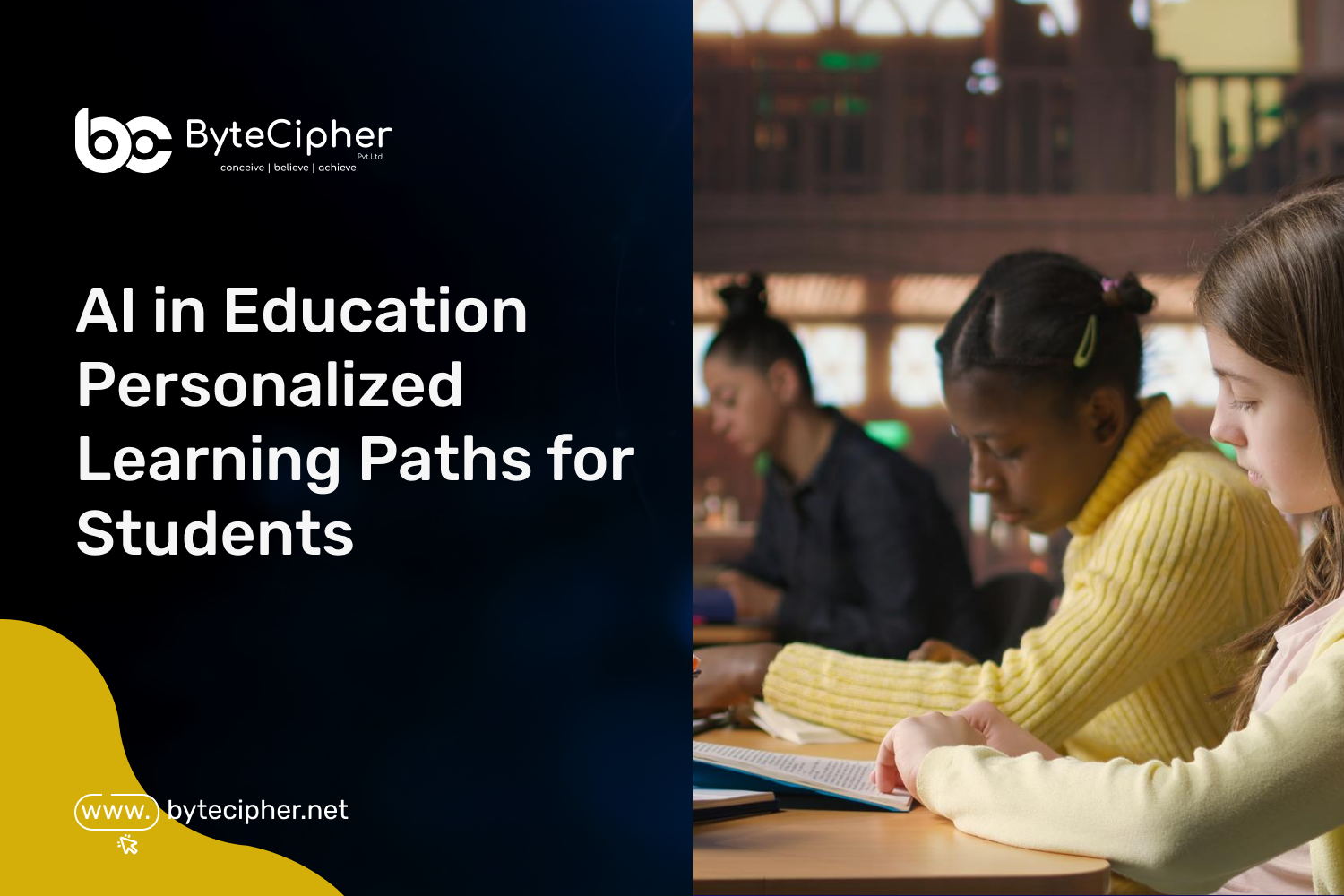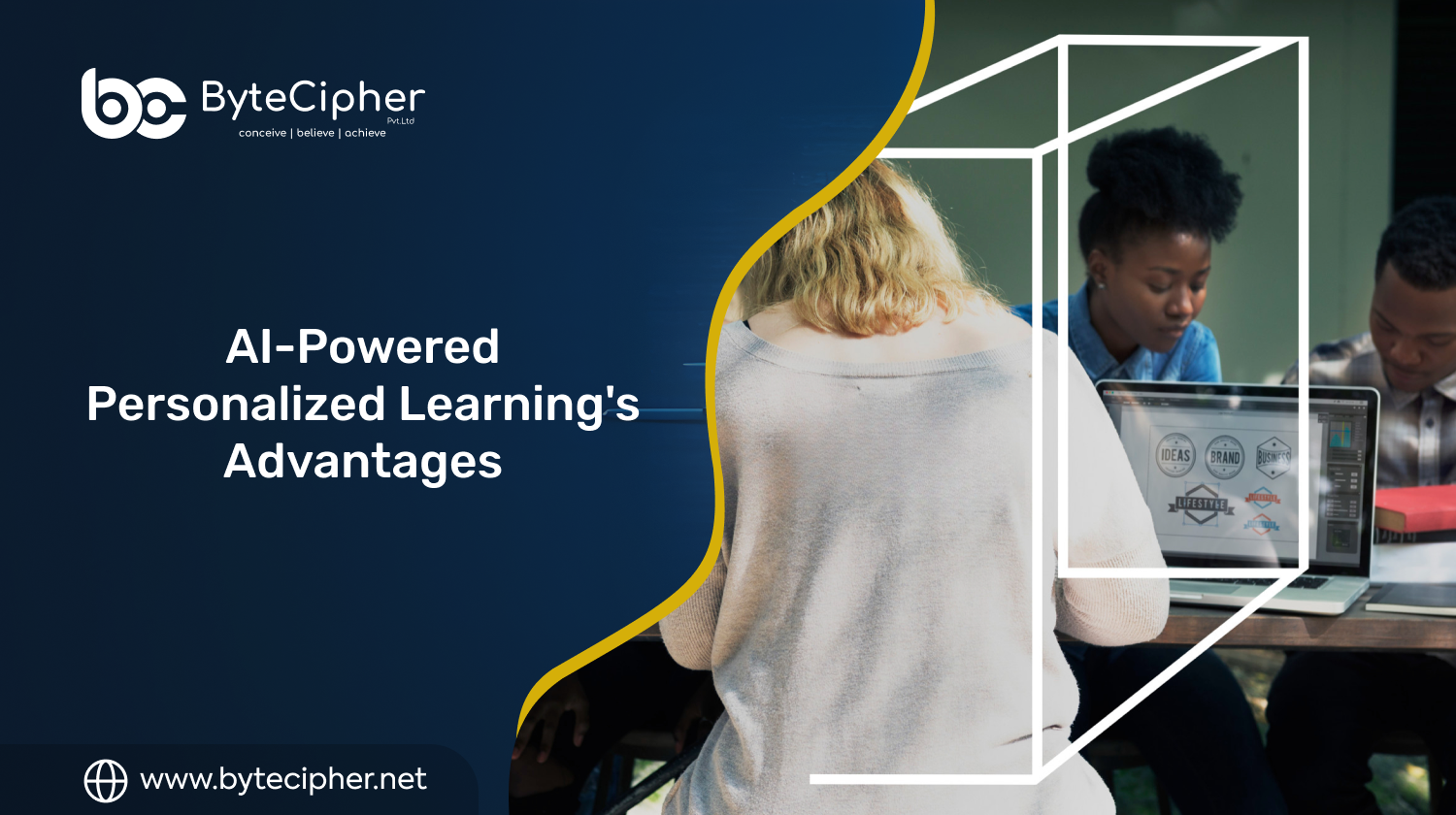
Personalized learning paths made possible by AI in education are revolutionizing the way that students learn. Examine the ways that predictive analytics, intelligent tutoring, and AI-driven adaptive systems are influencing classrooms of the future.
Overview: The New Age of Education
For many years, the educational system has operated according to a consistent paradigm, with the same lessons, pace, and assessment techniques. While this worked in the past, more adaptability is needed in the rapidly changing world of today. Each learner is different; some are exceptional mathematicians but have trouble with languages, while others read quickly but require more time to solve problems. Sadly, a one-size-fits-all strategy prevents children from thriving in accordance with their own talents.
Artificial Intelligence (AI) can help in this situation. Personalized learning routes that are suited to each student’s skills, learning preferences, and pace can be created by AI algorithms using real-time data. AI allows for inclusive, dynamic, and engaging learning rather than imposing students into inflexible frameworks.
Why Education Needs Personalization
There are a number of benefits to switching to machine learning-based fraud prevention over conventional methods.
Different People Have Different Learning Styles.
According to research, kids learn in many ways, whether it be through reading, hearing, pictures, or practical application. Some students may be left behind in a classroom intended for “average learners.”
Different Pacing
While slow learners could experience pressure, fast learners might experience boredom. Disengagement results in both situations. Nobody is left behind or held back thanks to personalized learning.
Pertinence to Real Life
The goal of education is to prepare pupils for their future vocations, not only to help them memorize knowledge. Learners can concentrate more on topics that are in line with their goals when they follow personalized paths.
In today’s educational environment, personalization is becoming essential rather than optional.
How Personalized Learning Paths Are Powered by AI
To provide individualized learning experiences, artificial intelligence (AI) leverages sophisticated algorithms, natural language processing, and predictive analytics. These are the main ways it functions:
1. Learning Algorithms That Adapt
Platforms powered by AI evaluate student performance and rapidly alter curriculum. As an illustration:
- After a student fails an algebra test, the system presents easier practice problems before moving on.
- If a pupil is particularly good at geometry, the level of difficulty is raised to keep them interested.
This guarantees steady advancement at the ideal rate.
2. Intelligent Guidance and Support
AI instructors serve as on-demand personal guides. These systems consist of:
- Respond to inquiries right away.
- Continue to explain ideas until the student grasps them.
- Encouragement will help students stay motivated.
In contrast to traditional instruction that is constrained by classroom hours, AI tutors provide 24/7 assistance.
3. Enhanced Results using Predictive Analytics
Through the identification of patterns in student behavior, AI may predict possible learning challenges. For example, if a student consistently has trouble with grammar in essays, the system anticipates future difficulties and recommends solutions.
By taking a proactive stance, teachers can intervene early and stop learning gaps from growing.
4. Tailored educational resources
Personalized films, texts, and practice exercises are suggested by AI based on user progress. Similar to how Netflix proposes movies or Spotify provides music, AI makes recommendations for educational materials based on the needs of each learner.
5. Availability and Inclusion
Everybody should have access to education. AI enables this through:
- Translating information into several different languages.
- Providing speech-to-text and text-to-speech for students with impairments.
- Changing the formats, colors, and text sizes for students who are blind or visually impaired.
AI makes ensuring that students from different backgrounds have inclusive learning experiences.
AI-Powered Personalized Learning’s Advantages
AI has an impact outside of academia. Let’s dissect the advantages:
For Learners
- Increased Engagement: The information is pertinent and fits their preferred method of learning.
- Increased Confidence: Stress is decreased when students learn at their own pace.
- Better Outcomes: Mastery is enhanced by more practice in areas of weakness.
- Ownership of Learning: Learners believe they have authority over their academic path.
Regarding Teachers
- Time-saving: AI streamlines evaluation and grading.
- More Insights: Teachers receive thorough performance reports on their students.
- Focused Guidance: Teachers can devote more time to mentoring when usual responsibilities are handled by AI.
- Scalable Teaching: A single instructor can teach a large number of pupils more successfully.
Regarding Institutions and Parents
- Progress Transparency: Parents can readily monitor their child’s growth.
- Effective Resource Allocation: Schools are able to determine which areas require additional support for kids.

Practical Uses of AI in Education
AI is changing classrooms all across the world; it’s not just a theory. Here are a few noteworthy examples—
- Khanmigo: A teaching assistant driven by AI and offering detailed explanations, is available from Khan Academy.
- Duolingo: Adapts language activities to a learner’s speed and proficiency level using AI.
- DreamBox Learning: A real-time adaptive math program that makes adjustments to problems.
- Squirrel AI: A Chinese company, provides millions of students with AI teaching that dynamically adapts lessons.
- Google Classroom AI Integrations: Provides individualized feedback and resource recommendations.
These real-world examples demonstrate that individualized learning is currently here and is not just a thing of the future.
Obstacles and Moral Implications
AI in education holds promise, however there are obstacles to overcome:
- Data Privacy: Because AI uses student data, there are security and abuse concerns.
- Over-reliance on technology: In order to gain social and emotional skills, students still want human teachers.
- Digital Divide: Not all students have devices or internet access, which is necessary to use AI tools.
- Bias in Algorithms: Lack of careful design can cause AI systems to mirror preexisting prejudices in education.
For AI systems to be moral, inclusive, and transparent, educators, legislators, and tech companies must collaborate.
The Prospects of AI-Powered Customized Education
Looking ahead, there will be significant developments in AI in education:
- Hyper-Personalized Classrooms: A daily updated lesson plan might be followed by every student.
- AI with emotional intelligence: Programs are able to identify the feelings of students, such as boredom or annoyance, and modify their lessons accordingly.
- Job Path Prediction: AI may recommend appropriate courses and future job opportunities based on students’ interests and skill sets.
- Global Learning Communities: By bridging cultural and geographic divides, AI can unite students around the world.
The ultimate objective is to empower educators rather than replace them while providing students with a personalized, encouraging, and motivating educational experience.
Final Thoughts
A student-centered, flexible, and future-ready education is being redefined by AI. Regardless of aptitude, speed, or background, every learner may succeed with personalized learning paths.
It signifies self-assurance and drive for students. For educators, it means less effort and useful insights. For schools, it implies better results and happy students.
The message is unmistakable: AI in education aims to maximize human potential rather than replace it.
Call to Action
Creating AI-powered solutions that revolutionize several industries, including education, is our area of expertise at ByteCipher Pvt. Ltd. In order to integrate individualized AI learning systems, our team can assist EdTech companies and institutions in designing platforms that are secure, scalable, and prepared for the future.
Get in touch with us now to find out how AI can transform your educational environment.


